Page 137 of 243

135 Your vehicle and the environment
Safety FirstControls and equipment Tips and Maintenance Technical Data
Y
Yo
ou
ur
r vve
eh
hi
ic
cl
le
e aan
nd
d tth
he
e een
nv
vi
ir
ro
on
nm
me
en
nt
t
T
Th
he
e ffi
ir
rs
st
t 11,
,5
50
00
0 kkm
m –– aan
nd
d aaf
ft
te
er
rw
wa
ar
rd
ds
s
Running-in
During the first few operating hours the engine internal friction is
higher than later on when all the moving parts have bedded down.
How well this running-in process is done depends to a
considerable extent on the way the vehicle is driven during the first
1,500 km.
K
Up to 1,000 kilometres
the following general rules apply:
•D Do
o nno
ot
t uus
se
e ffu
ul
ll
l tth
hr
ro
ot
tt
tl
le
e
•D Do
o nno
ot
t ddr
ri
iv
ve
e ffa
as
st
te
er
r tth
ha
an
n 33/
/4
4 oof
f tto
op
p ssp
pe
ee
ed
d
•A Av
vo
oi
id
d hhi
ig
gh
h een
ng
gi
in
ne
e ssp
pe
ee
ed
ds
s
•Trailer towing should if possible be avoided.
From 1,000 – 1,500 km
The speed can be gradually increased to the road or engine
maximum.
K
During and after the running-in period the following
applies:
•Do not overrev the engine when cold – either in neutral or in the
gears.
All speeds and revs given are only valid when engine isp pr
ro
op
pe
er
rl
ly
y
w wa
ar
rm
m
.
F Fo
or
r tth
he
e ssa
ak
ke
e oof
f tth
he
e een
nv
vi
ir
ro
on
nm
me
en
nt
t
Do not drive with the engine speed unnecessarily high – changing up
early helps to save fuel, reduces noise and protects the environment⇒"Environment friendly and economical driving" chapter.
•Do not let engine labour – change down when engine no longer
runs smoothly.
K
• • NNe
ew
w tty
yr
re
es
s mmu
us
st
t aal
ls
so
o bbe
e ““r
ru
un
n iin
n”
” bbe
ec
ca
au
us
se
e tth
he
ey
y ddo
o nno
ot
t hha
av
ve
e mma
ax
xi
im
mu
um
m
a ad
dh
he
es
si
io
on
n aat
t tth
he
e sst
ta
ar
rt
t.
. TTh
hi
is
s mmu
us
st
t bbe
e tta
ak
ke
en
n iin
nt
to
o aac
cc
co
ou
un
nt
t bby
y ddr
ri
iv
vi
in
ng
g cca
ar
re
ef
fu
ul
ll
ly
y
d du
ur
ri
in
ng
g tth
he
e ffi
ir
rs
st
t 110
00
0 kkm
m.
.
• • NNe
ew
w bbr
ra
ak
ke
e lli
in
ni
in
ng
gs
s mmu
us
st
t aal
ls
so
o bbe
e rru
un
n iin
n aan
nd
d ddo
o nno
ot
t hha
av
ve
e tth
he
e oop
pt
ti
im
mu
um
m
f fr
ri
ic
ct
ti
io
on
n ppr
ro
op
pe
er
rt
ti
ie
es
s ddu
ur
ri
in
ng
g tth
he
e ffi
ir
rs
st
t 220
00
0 kkm
m.
. TTh
he
e ssl
li
ig
gh
ht
tl
ly
y rre
ed
du
uc
ce
ed
d bbr
ra
ak
ki
in
ng
g
W
WA
AR
RN
NI
IN
NG
G
e ef
ff
fe
ec
ct
t cca
an
n bbe
e cco
om
mp
pe
en
ns
sa
at
te
ed
d ffo
or
r bby
y mmo
or
re
e ppr
re
es
ss
su
ur
re
e oon
n tth
he
e bbr
ra
ak
ke
e ppe
ed
da
al
l.
. TTh
hi
is
s
a al
ls
so
o aap
pp
pl
li
ie
es
s wwh
he
en
n nne
ew
w lli
in
ni
in
ng
gs
s hha
av
ve
e bbe
ee
en
n ffi
it
tt
te
ed
d.
.
K
W WA
AR
RN
NI
IN
NG
G ((c
co
on
nt
ti
in
nu
ue
ed
d)
)
Page 138 of 243

136Your vehicle and the environment
After the running-in period
•On vehicles with a rev counter* the maximum permissible engine
speed is shown by the beginning of the red zone on the rev
counter scale. The needle of the counter must not move into this
zone.
Extremely high engine revs will be automatically governed.
K
C Cl
le
ea
an
ni
in
ng
g tth
he
e eex
xh
ha
au
us
st
t ffu
um
me
es
s
Description
T
Th
he
e ppe
er
rf
fe
ec
ct
t ffu
un
nc
ct
ti
io
on
ni
in
ng
g oof
f tth
he
e ccl
le
ea
an
ni
in
ng
g ssy
ys
st
te
em
m ffo
or
r eex
xh
ha
au
us
st
t ffu
um
me
es
s
is of great importance for the environment-friendly functioning of
your vehicle.
Therefore, keep in mind the following points:
•Versions with a catalytic converter must only use unleaded fuel
⇒"Filling the tank" chapter.
•In vehicles with a catalytic converter never drive until the fuel
tank is completely empty. Irregular fuel supply can cause misfiring,
thus allowing unburned fuel into the exhaust system which can
cause overheating and damage to the catalyst.
•If you experience starting difficulties, loss of power or engine
problems while driving, the cause could be a failure in the ignition.
In this case, fuel may be entering the exhaust system withoutburning and, in this way being released into the atmosphere.
Furthermore, the catalyst could deteriorate due to overheating.
Reduce speed immediately. Have this problem fixed at the nearest
Technical Service Centre.
•Do not overload the engine with oil
⇒"Engine oil" chapter.
•Do not towstartthe vehicle for more than 50 m
⇒"Tow
start/towing" chapter.
N No
ot
te
e
Even when the cleaning system for exhaust fumes is in perfect working
order, under certain circumstances, the fumes may smell like sulfur.
This depends on the percentage of sulfur in the fuel.
Often it is sufficient to change brands or buy super unleaded.
K
•D Du
ue
e tto
o ppo
os
ss
si
ib
bl
le
e hhi
ig
gh
h tte
em
mp
pe
er
ra
at
tu
ur
re
es
s oof
f tth
he
e cca
at
ta
al
ly
ys
st
t,
, ddo
o nno
ot
t ppa
ar
rk
k iin
n
p pl
la
ac
ce
es
s wwh
he
er
re
e tth
he
e cca
at
ta
al
ly
ys
st
t iis
s eea
as
si
il
ly
y eex
xp
po
os
se
ed
d tto
o iin
nf
fl
la
am
mm
ma
ab
bl
le
e mma
at
te
er
ri
ia
al
l.
.
•D
Do
o nno
ot
t uus
se
e aad
dd
di
it
ti
io
on
na
al
l ppr
ro
ot
te
ec
ct
ti
io
on
n ffo
or
r tth
he
e bbo
od
dy
y oor
r aan
nt
ti
ic
co
or
rr
ro
os
si
iv
ve
e ppr
ro
od
du
uc
ct
ts
s ffo
or
r
s su
um
mp
ps
s aan
nd
d eex
xh
ha
au
us
st
t ppi
ip
pe
es
s,
, c
ca
at
ta
al
ly
yt
ti
ic
c cco
on
nv
ve
er
rt
te
er
rs
s oor
r hhe
ea
at
t ssh
hi
ie
el
ld
ds
s.
.T
Th
he
e
a ab
bo
ov
ve
e mme
en
nt
ti
io
on
ne
ed
d mma
at
te
er
ri
ia
al
l cco
ou
ul
ld
d iig
gn
ni
it
te
e wwh
hi
il
le
e ddr
ri
iv
vi
in
ng
g.
.
W
WA
AR
RN
NI
IN
NG
G
Page 139 of 243

137 Your vehicle and the environment
Safety FirstControls and equipment Tips and Maintenance Technical Data
E
En
nv
vi
ir
ro
on
nm
me
en
nt
t-
-f
fr
ri
ie
en
nd
dl
ly
y aan
nd
d eec
co
on
no
om
mi
ic
ca
al
l
d dr
ri
iv
vi
in
ng
g
General notes
Three factors determine the fuel consumption, the burden on the
environment and the wear on the engine, brakes and tyres:
•The personal driving style.
•The individual conditions of the use of the car.
•Technical prerequisites.
The fuel consumption can be reduced by 10 to 15 percent by
adopting a thoughtful and economic driving style. This chapter will
help you lower pollution and save money by following 10
suggestions.
K
Suggestion 1. Thoughtful driving style
The highest fuel consumption takes place during acceleration. If
you drive in a thoughtful manner you will have to brake less and,
therefore, accelerate less. You can also let the vehicle roll, i.e.
when you can foresee that the following traffic light will be red.
K
Suggestion 2. Changing gears saves energy
Another way to save fuel is to change up as quickly as possible. If
you drive with high engine revs the car will use up more energy.
The fig. 100shows the relation between the consumption (l/100
km) and speed (km/h) in first, second, third, fourth and fifth gear.
The following rules may be helpful. Never drive more than a few
meters in first gear. When you reach 2,000 revolutions, you should
change up.
If you drive a vehicle with an automatic gearbox, press the
accelerator pedal gently. Do not press it to the kick-down position.
This way, a consumption oriented program is automatically
selected. It changes up as soon as possible and takes longer to
change down.
K
30 50 70km/h
90
l/100km
1.
2.
3.
4.
5.
B45-354PFig. 100
Page 140 of 243

138Your vehicle and the environment
Suggestion 3. Avoid driving at maximum speed
Try not to drive at maximum speed. The increase of fuel
consumption, exhaust pollution and noise is disproportionate at
high speeds.
The illustration shows the relation between consumption (l/100
km) and speed (km/h)
⇒fig. 101.
If only about 3 quarters of top speed is utilized, the fuel
consumption will be reduced by about half.
Suggestion 4. Decrease idling
It is worth switching off1)the engine in traffic jams, at railroad
crossings and at traffic lights with a long red light. The savings in
fuel after 30-40 seconds with the engine switched off is higher
than the fuel used to switch the engine on again.
K
Suggestion 5. Periodic revisions
Your fuel savings are guaranteed even before going on a trip with
periodic revisions by your Technical Service Centre. Proper engine
maintenance is not only a safety and maintenance issue but also a
fuel consumption issue.
Poor fine tuning of the engine may increase fuel consumption by
up to 10%.
Check the oil level every time you fill up. The oil consumption
depends largely on the engine load. Depending on the driving
style, the oil consumption can be up to 1.0 l/1000 km.
Another suggestion: You can also lower oil consumption by using
synthetic oils.
K
km/h
max
l/100km
B45-355PFig. 101
1)Statutory regulations must be respected.
D Dr
ri
iv
vi
in
ng
g aat
t hhi
ig
gh
h ssp
pe
ee
ed
ds
s dde
ec
cr
re
ea
as
se
es
s rro
oa
ad
d ssa
af
fe
et
ty
y.
.
K
W WA
AR
RN
NI
IN
NG
G
Page 141 of 243

139 Your vehicle and the environment
Safety FirstControls and equipment Tips and Maintenance Technical Data
Suggestion 6. Avoid short drives
The engine and the catalytic converter must reach its optimum
functioning temperature in order to effectively reduce consumption
and toxic gas emissions.
The fuel consumption of a cold engine of a normal vehicle right
after the start is about 30-40 liters per 100 km. After about one
kilometer the consumption decreases to 20 liters. After about
f fo
ou
ur
r
kilometers the engine has warmed up and the consumption is
normal. For this reason, it is important to avoid short drives and
heating the vehicle’s engine when the vehicle is not moving. Drive
on quickly!
The ambient temperature also counts. The illustration shows the
difference in consumption (l/100km) for the same distance (km) at
+20°C and –10°C. Your vehicle’s consumption is higher in the
summer than in the winter
⇒fig. 102.K
Suggestion 7. Check the tyre pressure
Make sure that the tyres have always adequate pressure. Even half
a bar less increases the level of fuel consumption by 5 percent. If
the pressure is not correct, the tyres wear out faster due to an
excessive deformation and overheating which, in turn, will
decrease the driving performance.
Always check the tyre pressure when the tyre is cold.
In addition, do not drive year round with winter tyres. They make
more noise and increase fuel consumption by 10 percent. Change
to summer tyres on time.
K
Suggestion 8. Avoid unnecessary weight
Apart from driving habits and periodic revisions of your vehicle,
there are other ways to reduce fuel consumption:
A Av
vo
oi
id
d uun
nn
ne
ec
ce
es
ss
sa
ar
ry
y wwe
ei
ig
gh
ht
t
Every kilogram increases fuel consumption. For this reason, it is
worth checking your boot to avoid unnecessary weight.
Frequently, the roof rack will stay on the roof even though it is no
longer needed. Due to greater air resistance, an unloaded roof
rack at a speed of 100-120 km/h increases the consumption by
approx. 12%.
K
5+20°C –10°C
15 25km
30
l/100km
B45-356PFig. 102
Page 142 of 243

140Your vehicle and the environment
Suggestion 9. Save electricity
The alternator generates electricity while driving. The more
electricity is used, the higher the fuel consumption.
The heated rear window, extra lights, the heater fan and air
conditioning* use a large amount of energy. The heated rear
window creates a consumption of approx. one liter for every 10
hours.
For this reason, disconnect electrical consumers as soon as they
are no longer needed. The alternator generates electricity when the
engine is running.
K
Suggestion 10. Written check-up
If you wish to reduce fuel consumption keep a trip book. It is not
much work and is worth while since it allows you to detect possible
consumption variations (positive or negative) on time and
intervene, if necessary. If you detect an increase in consumption
you should examine the driving conditions since the last filling.
K
T Tr
ra
ai
il
le
er
r tto
ow
wi
in
ng
g
What do you need to bear in mind when towing a trailer?
The vehicle is designed mainly to carry people and luggage.
However it may also be used to tow a trailer, as long as you fit it
with the technically appropriate equipment and you do not
exceed the maximum authorised weights
⇒“Technical Data”
chapter.Towing a trailer not only demands more from the car, but from the
driver too.
You should therefore strictly adhere to the service and running-in
instructions on the following pages.
T Te
ec
ch
hn
ni
ic
ca
al
l rre
eq
qu
ui
ir
re
em
me
en
nt
ts
s
•If the trailer to be towed has a 7-pin plug, an adapter cable can
be used which may be obtained in any Technical Service Centre.
Installation of a towing bracket at a later stage should be carried
out according to the instructions of the towing bracket
manufacturer.
I If
f aa ttr
ra
ai
il
le
er
r iis
s ffi
it
tt
te
ed
d aat
t aa lla
at
te
er
r sst
ta
ag
ge
e,
, yyo
ou
u ssh
ho
ou
ul
ld
d uus
se
e tth
he
e bbo
od
dy
y rre
ei
in
nf
fo
or
rc
ce
em
me
en
nt
t
s se
et
t dde
es
si
ig
gn
ne
ed
d bby
y SSE
EA
AT
T.
.
O Ot
th
he
er
rw
wi
is
se
e yyo
ou
u mma
ay
y sse
er
ri
io
ou
us
sl
ly
y dda
am
ma
ag
ge
e tth
he
e bbo
od
dy
y wwo
or
rk
k.
.
D Da
an
ng
ge
er
r oof
f aac
cc
ci
id
de
en
nt
t!
!
T To
o iin
ns
st
ta
al
ll
l tth
he
e tto
ow
w jjo
oi
in
nt
t,
, wwe
e rre
ec
co
om
mm
me
en
nd
d tth
ha
at
t yyo
ou
u vvi
is
si
it
t aa TTe
ec
ch
hn
ni
ic
ca
al
l SSe
er
rv
vi
ic
ce
e
C Ce
en
nt
tr
re
e.
.
K
W WA
AR
RN
NI
IN
NG
G
Page 143 of 243

141 Your vehicle and the environment
Safety FirstControls and equipment Tips and Maintenance Technical Data
Fixing points for tow bar*A4 attachment points
B72 mm
C420 (empty vehicle) /
350 mm (vehicle with max. load)
D958 mm
E413 mm
F166 mm K
Driving tips
• • TTh
he
e tto
ow
wi
in
ng
g dde
ev
vi
ic
ce
e iis
s aa ssa
af
fe
et
ty
y eel
le
em
me
en
nt
t aan
nd
d yyo
ou
u ssh
ho
ou
ul
ld
d tth
he
er
re
ef
fo
or
re
e
o on
nl
ly
y uus
se
e aa dde
ev
vi
ic
ce
e ssp
pe
ec
ci
if
fi
ic
ca
al
ll
ly
y dde
es
si
ig
gn
ne
ed
d ffo
or
r yyo
ou
ur
r vve
eh
hi
ic
cl
le
e aan
nd
d wwh
hi
ic
ch
h
i is
s ddu
ul
ly
y aap
pp
pr
ro
ov
ve
ed
d.
.
O Op
pe
er
ra
at
ti
io
on
ns
s iin
ns
st
tr
ru
uc
ct
ti
io
on
ns
s
•The removable ball coupling of the towing bracket* may be
stored in the tool box located inside the spare wheel recess.
•Additional mirrors are required if the traffic behind the trailer is
not visible with the exterior mirrors fitted as standard. Both exterior
mirrors must be attached to brackets in such a way that a sufficient
field of vision to the rear is guaranteed at all times.
•The permitted trailer weight must not be exceeded under any
circumstances
⇒chapter “Technical Data”.
•In vehicles equipped with air conditioning, the factory
installation provides reinforced cooling system to account for the
fitting of a towing device.
Fig. 103
�
AB
C
F
A
E
D
CON-006
Page 144 of 243

142Your vehicle and the environment
•In vehicles without air conditioning, the cooling system should
be reinforced if a towing device is fitted at a later stage.
Failure to do so will submit the engine to greater stress (steep
slopes, high temperatures, heavy towing loads, etc.) and result in
overheating of the engine. For more information, contact a
Technical Service Centre.
•When using a trailer on mountain routes you must bear in mind
that the tow loads given in the “Technical data” chapter are only
applicable for slopes of 10% to 12%. If you do not use the full tow
load you may drive up steeper slopes.
•The given trailer weights are only applicable for altitudes up
to 1000 m above sea level. As the engine output drops due to
the decreasing air density, the climbing ability must also be
reduced by 10% for each further 1000 m.
•Where possible make full use of the maximum permissible
drawbar weight on the ball of the towing bracket but do not exceed
it
⇒chapter “Technical Data”.
•While observing the permissible trailer and drawbar weight,
distribute the load in the trailer so that heavy objects are as near
as possible to the axle. The objects must also be secured so that
they cannot slip about.
•The tyre pressures on the towing vehicle must be adjusted for full
load conditions, and also check the pressures on the trailer.
•Headlight settings should be checked, with the trailer attached,
before beginning the journey and adjusted as necessary.
On vehicles with headlight beam control it is only necessary to turn
the knurled disc on the dash board in the appropriate direction.D Dr
ri
iv
vi
in
ng
g iin
ns
st
tr
ru
uc
ct
ti
io
on
ns
s
To obtain the best possible handling of vehicle and trailer, the
following should be noted:
• Try to avoid driving with an unladen vehicle and a loaded trailer.
If this cannot be avoided, only drive slowly to allow for the
unfavourable weight distribution.
• As driving stability of vehicle and trailer decreaseswhen the
speed increases do not drive at the maximum permissible top
speed in unfavourable road, weather or wind conditions –
particularly when going downhill.
In any case the speed must be reduced as soon as the trailer
shows the slightest sign of snaking. On no account try to stop the
snaking by accelerating.
• • FFo
or
r ssa
af
fe
et
ty
y rre
ea
as
so
on
ns
s oon
ne
e ssh
ho
ou
ul
ld
d nno
ot
t ddr
ri
iv
ve
e ffa
as
st
te
er
r tth
ha
an
n 880
0 kkm
m/
/h
h
( (5
50
0 mmp
ph
h)
).
. TTh
hi
is
s aal
ls
so
o aap
pp
pl
li
ie
es
s iin
n cco
ou
un
nt
tr
ri
ie
es
s wwh
he
er
re
e hhi
ig
gh
he
er
r ssp
pe
ee
ed
ds
s aar
re
e
p pe
er
rm
mi
it
tt
te
ed
d.
.
• Always brake in good time. If the trailer has an overrun brake,
apply the brakes gently at first then firmly. This will avoid the
jerking caused by the trailer wheels locking.
Change down before going down a steep hill so that the engine
can act as a brake.
• When a long climb in a low gear with extremely high engine revs
must be negotiated at exceptionally high ambient temperatures
the coolant temperature gauge must be observed. When the gauge
needle moves to the right end of the scale, the road speed must be
reduced immediately.
• The cooling effect of the radiator fan cannot be increased by
changing down, because the speed of the fan is not dependent on
�
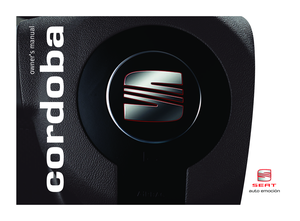 1
1 2
2 3
3 4
4 5
5 6
6 7
7 8
8 9
9 10
10 11
11 12
12 13
13 14
14 15
15 16
16 17
17 18
18 19
19 20
20 21
21 22
22 23
23 24
24 25
25 26
26 27
27 28
28 29
29 30
30 31
31 32
32 33
33 34
34 35
35 36
36 37
37 38
38 39
39 40
40 41
41 42
42 43
43 44
44 45
45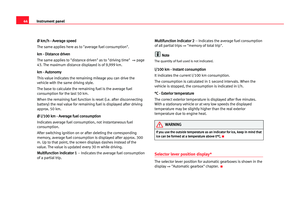 46
46 47
47 48
48 49
49 50
50 51
51 52
52 53
53 54
54 55
55 56
56 57
57 58
58 59
59 60
60 61
61 62
62 63
63 64
64 65
65 66
66 67
67 68
68 69
69 70
70 71
71 72
72 73
73 74
74 75
75 76
76 77
77 78
78 79
79 80
80 81
81 82
82 83
83 84
84 85
85 86
86 87
87 88
88 89
89 90
90 91
91 92
92 93
93 94
94 95
95 96
96 97
97 98
98 99
99 100
100 101
101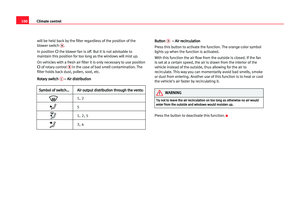 102
102 103
103 104
104 105
105 106
106 107
107 108
108 109
109 110
110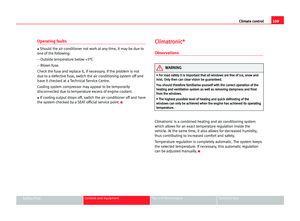 111
111 112
112 113
113 114
114 115
115 116
116 117
117 118
118 119
119 120
120 121
121 122
122 123
123 124
124 125
125 126
126 127
127 128
128 129
129 130
130 131
131 132
132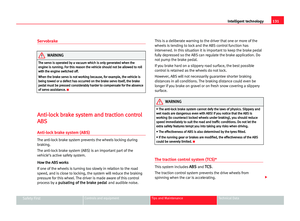 133
133 134
134 135
135 136
136 137
137 138
138 139
139 140
140 141
141 142
142 143
143 144
144 145
145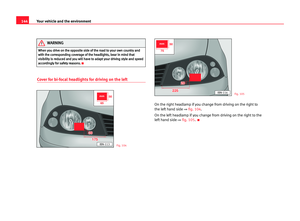 146
146 147
147 148
148 149
149 150
150 151
151 152
152 153
153 154
154 155
155 156
156 157
157 158
158 159
159 160
160 161
161 162
162 163
163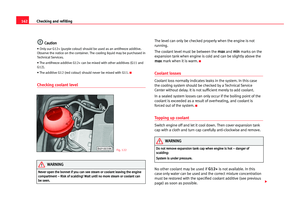 164
164 165
165 166
166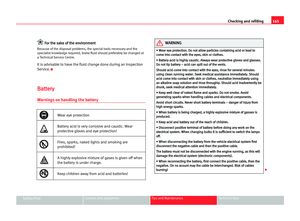 167
167 168
168 169
169 170
170 171
171 172
172 173
173 174
174 175
175 176
176 177
177 178
178 179
179 180
180 181
181 182
182 183
183 184
184 185
185 186
186 187
187 188
188 189
189 190
190 191
191 192
192 193
193 194
194 195
195 196
196 197
197 198
198 199
199 200
200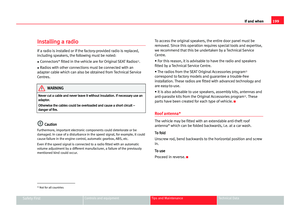 201
201 202
202 203
203 204
204 205
205 206
206 207
207 208
208 209
209 210
210 211
211 212
212 213
213 214
214 215
215 216
216 217
217 218
218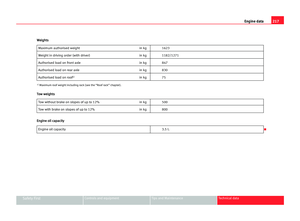 219
219 220
220 221
221 222
222 223
223 224
224 225
225 226
226 227
227 228
228 229
229 230
230 231
231 232
232 233
233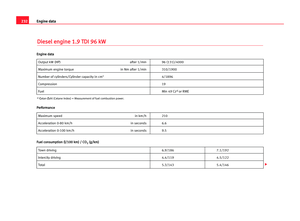 234
234 235
235 236
236 237
237 238
238 239
239 240
240 241
241 242
242






